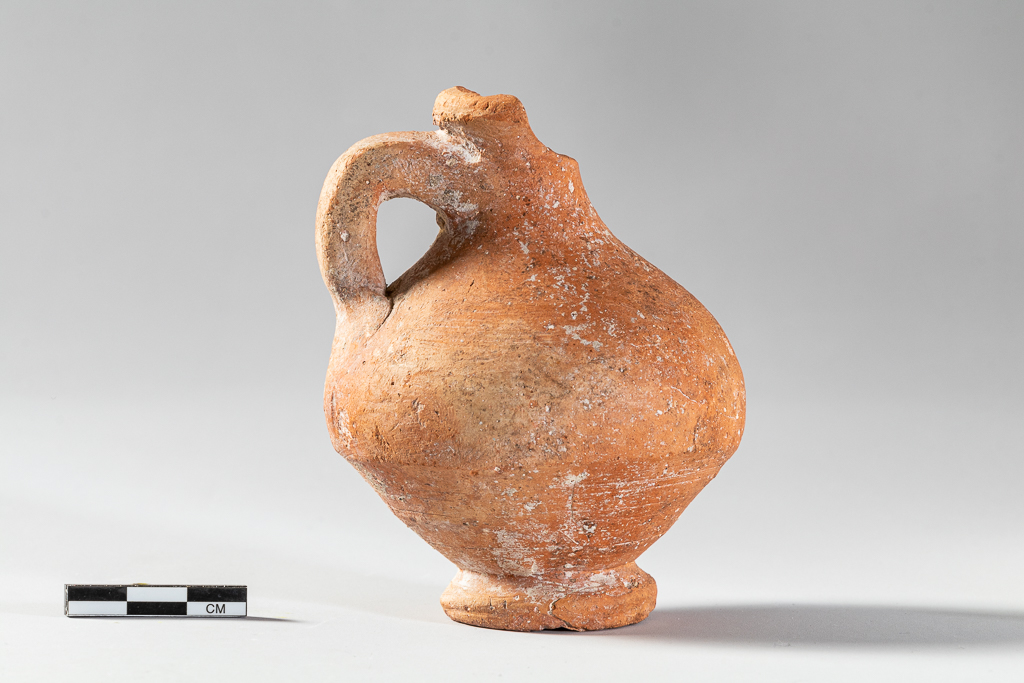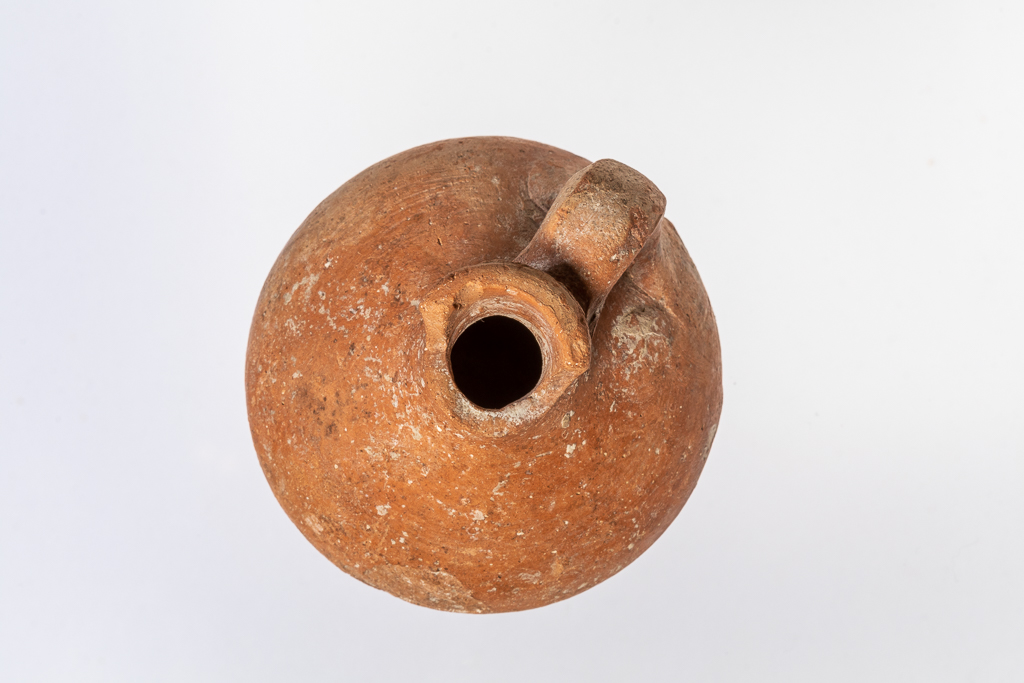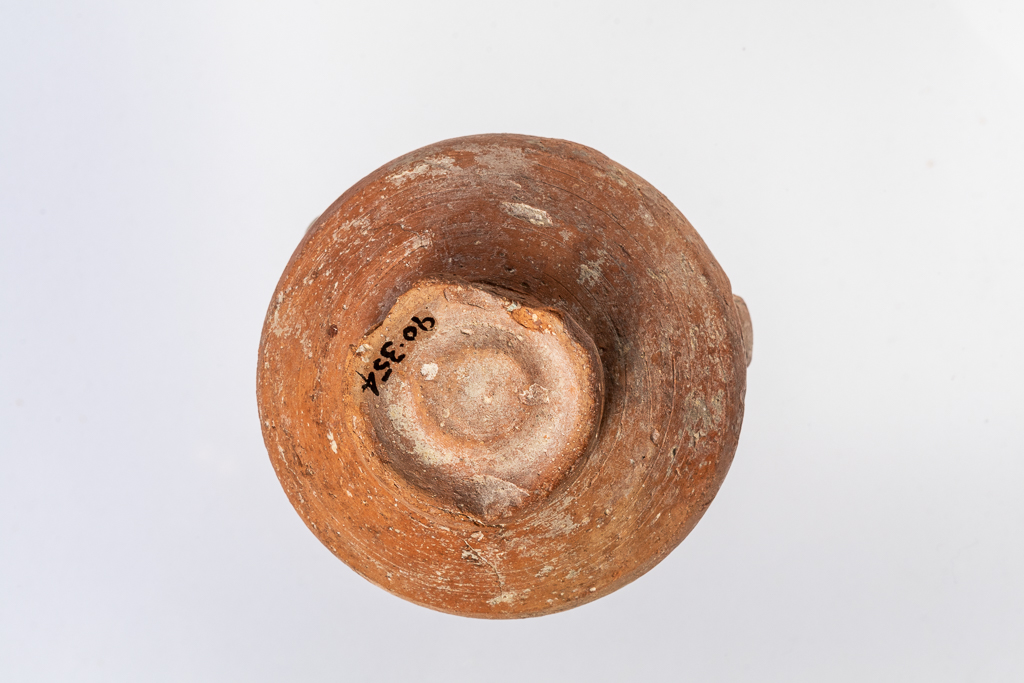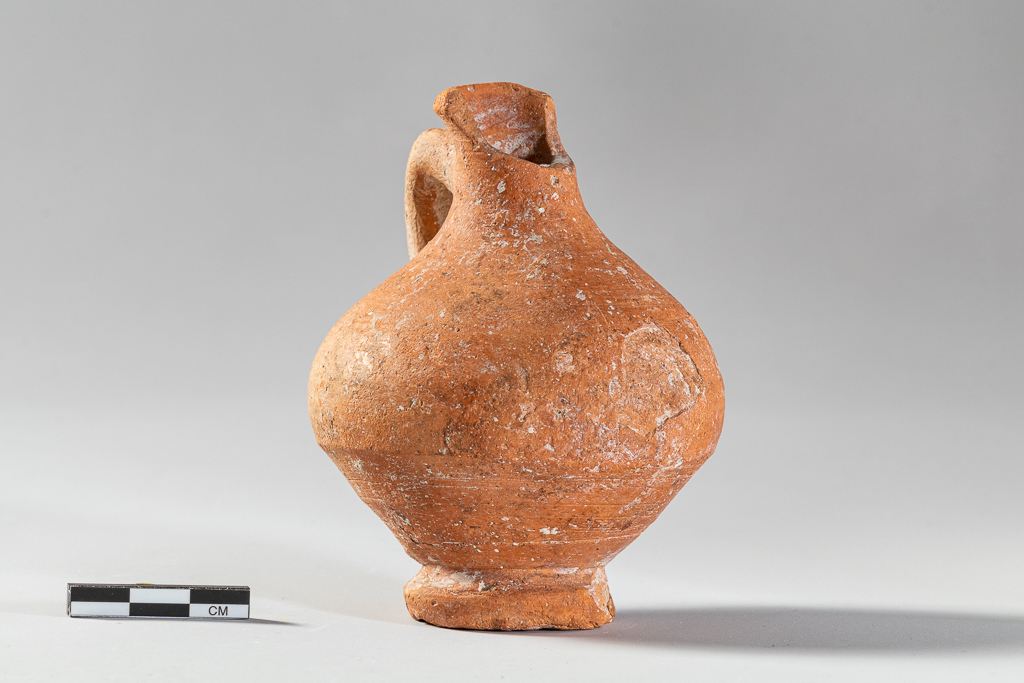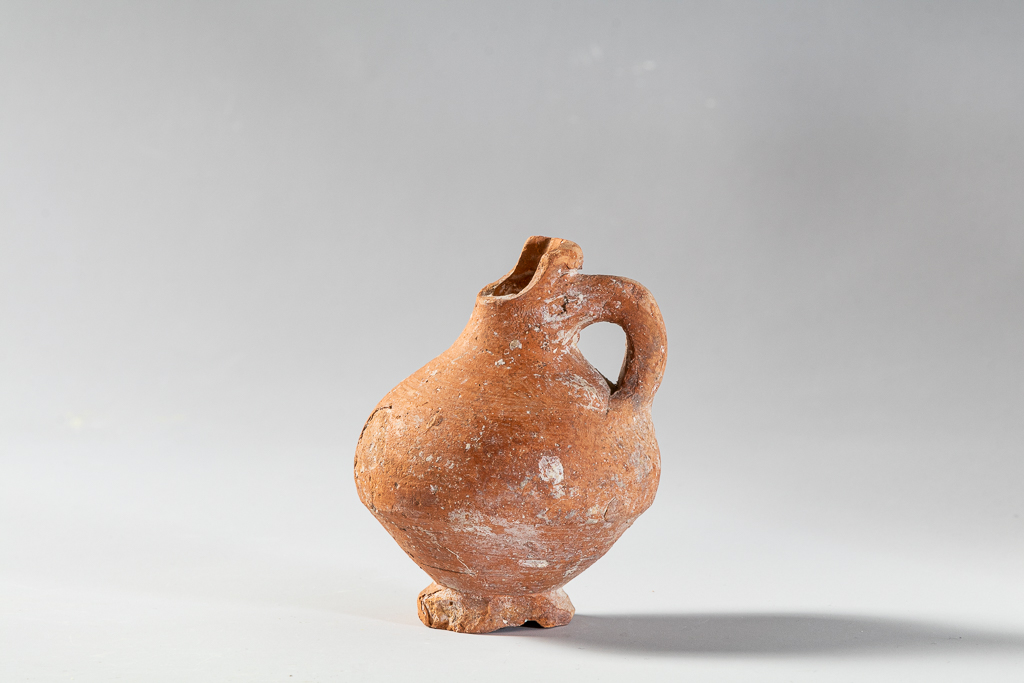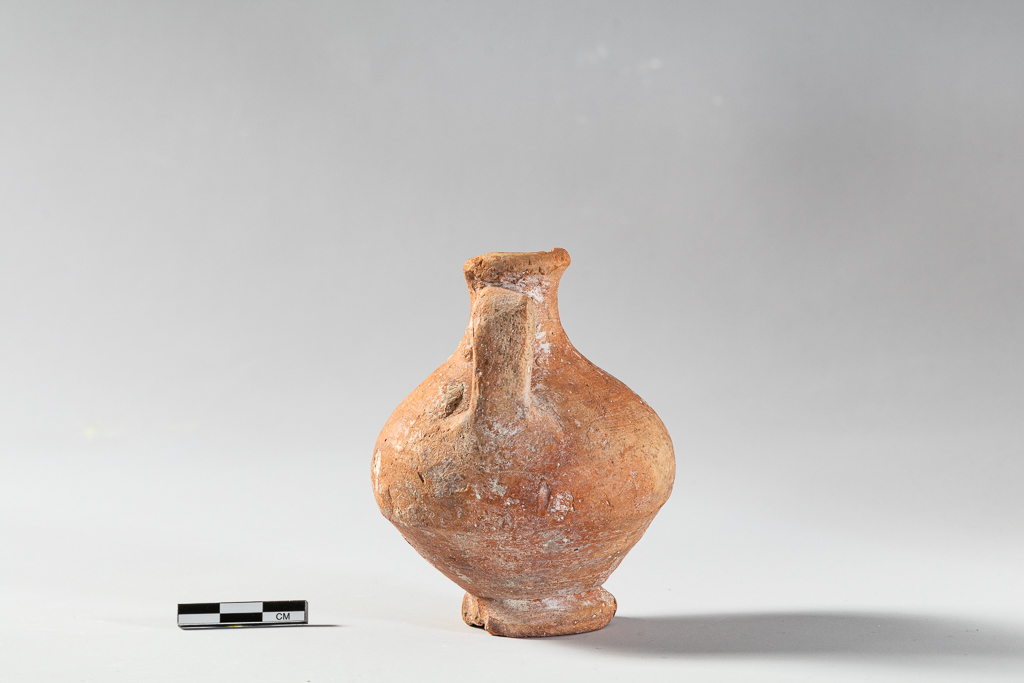Title: Juglet - 2017.11
Acquisition number: 2017.11
Author or editor: Ruth Mcconnell
Culture or period: Hellenistic
Date: 3rd - 1st century BC
Material: Clay - Terracotta
Object type: Vessels - Jug/wine jug
Dimensions: 69mm (w) × 90mm (h)
Origin region or location: Syria
Origin city: Jebel Khalid
Display case or on loan: 4
Keywords: Jebel Khalid, Pottery, Hellenistic
A.M. Berlin, “The Plain Wares”, in: S. Herbert (ed.), Tel Anafa II, i - The Hellenistic and Roman Pottery (Ann Arbor, 1997) ix-244.
H. Jackson, “The Common Wares from the Housing Insula”, in: H. Jackson and J. Tidmarsh, Jebel Khalid on the Euphrates, vol. 3 - The Pottery (Sydney, 2011) 1-261.
S. Rotroff, The Athenian Agora, vol. 29 - Athenian and Imported Wheelmade Table Ware and Related Material (Princeton, 1997).
2017.11
Juglet
From the excavations at Jebel Khalid, north Syria, inventory number 90.354
On loan from Emeritus Professor Graeme Clarke
Max. diameter 6.9cm; height 9cm
Intact body, rim partly missing. Slightly out-turned rim on short narrow neck. Globular body on low ring base. Thick oval strap handle from neck to shoulder. Red slip.
A juglet is a single handled small pouring jug under around 15cm in height. These useful household items were generally of local manufacture rather than acquired by long-distance trade. Purposes for juglets varied according to capacity and form, and some of a more finished appearance, such as the red-slipped present juglet, may have been intended as tableware. A more crudely rendered item may have been confined to kitchen use (A.M. Berlin, “The Plain Wares”, in: S. Herbert (ed.), Tel Anafa II, i - The Hellenistic and Roman Pottery (Ann Arbor, 1997) 50 and 142).
The present juglet was unearthed during excavations of the Acropolis Palace at Jebel Khalid in north Syria (inv. no. 90.354), and its shape has many parallels from other Hellenistic sites. The item can only hold 77mls of liquid, suggesting it might have been used for products generally procured in small quantities such as perfumed oil or olive oil (H. Jackson, forthcoming). A.M. Berlin proposes that loss by evaporation could be minimised by juglet shapes similar to the item here (“The Plain Wares”, 51).
The present juglet may also have been used as a measuring vessel. S. Rotroff notes the use of some Hellenistic juglets as possible measuring cups, but these examples have larger handles and wider rims (The Athenian Agora, vol. 29 (Princeton, 1997) 133), perhaps rendering them more useful in this capacity than the present item.
Another juglet found at Jebel Khalid is of a similar globular shape, but is of even smaller proportions. This suggests it is a miniature vessel with no storage or pouring utility that may perhaps have been a toy (H. Jackson, “The Common Wares from the Housing Insula”, in: H. Jackson and J. Tidmarsh, Jebel Khalid on the Euphrates, vol. 3 (Sydney, 2011) 98 and 258-259).
On loan from Emeritus Professor Graeme Clarke
